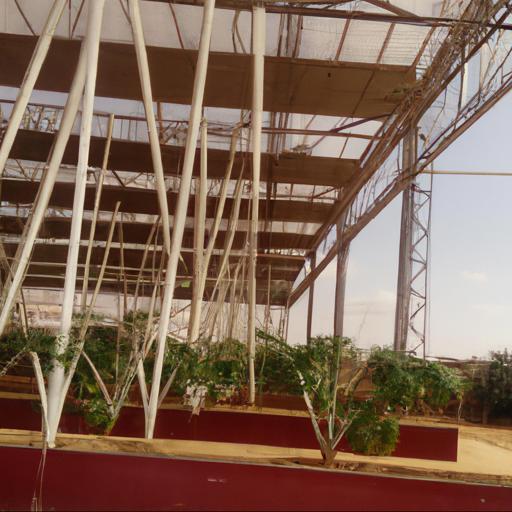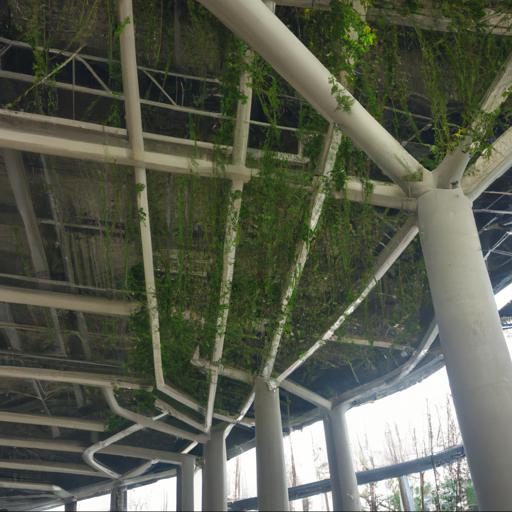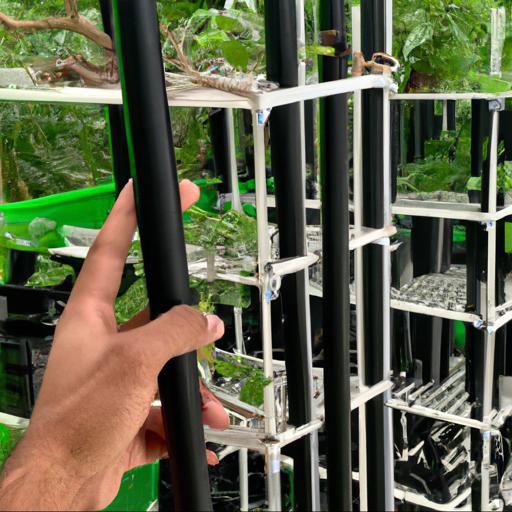Do you want to support your plants for a better, healthier life? It can be difficult to know where to start, but with the right knowledge and techniques, you can easily provide your plants with the care they need.
In this blog, we will discuss how to support plants, from choosing the right soil and fertilizer to giving them the right amount of sunlight and water. We’ll also cover other tips and tricks to help keep your plants looking and feeling their best. So, let’s get started and learn how to support plants!
Types of plant support structures

As a UK garden expert, it’s essential to understand the different types of plant support structures, they can play a vital role in helping plants to reach their full potential. In this blog, I’ll explain the various ways of providing support for your plants, along with examples of each type. One of the most popular and most talked about methods of supporting plants is the use of garden stakes.
This can be very effective in providing plants with the height they need to reach their full potential in the garden. Choosing the right size of stakes and using appropriately sized stakes can really make a difference to the growth of your plants.
For example, if you want to encourage upright growth or climbing plants, a stake placed at the base of the plant with a support at the top can be an effective choice. Another type of supportive structure for plants is a trellis or system of wires. This allows climbers and sprawling plants to find support as they grow.
The size, height and strength of the trellis should be appropriate for the particular type of plant you are growing and the environment in which it will be growing. Trellises can be made out of metal, wood, plastic or even bamboo and they can be used as a support structure for trees, plants, even vines.
Finally, containers or planters can also offer a great way to support plants in an enclosed area. Containers are available in a variety of shapes and sizes and come in plastic, metal, wood, terra cotta, ceramic, or even hanging baskets.
A container for a large, strong growing plant can help provide an equal amount of support to prevent it from falling over or bending. Additionally, the size of the container can be varied to suit the needs of the plant and the space available. In conclusion, providing adequate support for plants is essential for their success in any garden.
By understanding and applying the different types of support available, you can ensure all your plants reach their maximum potential. Garden stakes, trellises and planters can each offer different types of support, depending on your specific garden needs and the type of plants you are growing.
Benefits of plant support structures

As a UK garden expert, I’m here to talk about the benefits of using plant support structures. With the right type of support, plants can reach greater heights and flourish for a longer period of time. With clever use of supports, you can even grow seasonal plants year-round!
Plant supports provide additional structure to plants that can help them reach greater heights and have stronger roots. By allowing the plant to rest against the support, it can use the energy in the roots more efficiently and therefore reach greater heights.
Additionally, when used correctly, supports can also help to protect the plant from wind, rain, and pests. Another benefit of using plant support structures is that they give you the flexibility to grow seasonal plants at any time of year.
For example, if you have a warm, sunny space in your garden that would be ideal for growing perennials and shrubs, you can manipulate the supports to hold back these plants until the right season. This means that in the winter, when these plants wouldn’t normally be in bloom, they still can be thanks to the support. Picking the right type of support structure is key to reaping the benefits of plant supports.
Whether you choose metal, plastic, or wooden supports, they must be strong enough to hold up your plants as they grow, and not cause any damage to them. Additionally, be careful when planting climbers or trailing plants to ensure that they are secured correctly within the structures and will not cause any damage as the plants grow.
In conclusion, the benefits of using plant supports are numerous, from allowing plants to reach greater heights and have stronger roots, to allowing you the flexibility to grow seasonal plants all year-round. To make the most of your plant supports, make sure to pick a structure that fits your gardening needs and is strong enough to hold up the plants. With the right support, your plants will be thriving in no time.
How to choose the right plant support structure

When it comes to gardening, one of the most important decisions a gardener has to make is what kind of plant support structure is best for their plants. Proper plant support is essential in order to ensure the health and longevity of any garden. From staking and trellising to cages and netting, there are a variety of different options available to gardeners that come with both advantages and disadvantages, depending on the type of plants being grown and the goals of the gardener.
To make the right decision and ensure that your garden plants receive the proper support, it helps to understand the types of plant support structures out there, how they work and how they benefit your garden. Stakes are one of the most common forms of plant support structure and are used to provide support to large, floppy plants or tall vines and trees.
Stakes can be made from wood, bamboo, or plastic, and are inserted into the soil beside the plant to provide additional stability. Additionally, stakes can often be used with ties, wires or twine to bind the plant to the stake and keep it from swaying or falling over from the wind or from its own weight. Cages are another popular plant support structure and are generally used for larger plants such as tomatoes, cucumbers and the like.
They provide additional support to the stems and branches of the plants, allowing them to grow more abundantly. There are many different types of cages, such as trellised cages, hoops with netting, or single-rod cages.
Most cages range in size, with some reaching heights of up to four feet, so be sure to select one that is appropriately sized for your plants. Trellises are a third type of plant support structure that can be used within gardens.
Tall plants such as peas, cucumbers, and other vining types can benefit greatly from the use of a trellis to grow on. Trellises come in many different sizes and can generally be installed on the ground or cut into pieces to fit larger areas. Trellises provide additional support for these tall plants, making them easier to maintain, as well as allowing for proper air circulation and sun exposure.
Choose the right plant support structure for your garden depends on your individual needs and the type of plants you wish to grow. Do your research and investigate the different types of structures available, as well as their specific benefits, before deciding which is best for your garden. With the right plant support structure in place, your garden will be able to flourish for many years to come.
Diy plant support structures: tips and tricks
As the garden season picks up, it’s essential to create adequate structures to properly hold and support our beloved plants. DIY plant support structures serve to boost the aesthetic beauty of our gardens and yards, while protecting and nurturing precious vegetation, as well as providing practical objectives in alluring diverse types of shrubs and flowers.
Fortunately, creating and assembling your own DIY plant support structures is not an overly complicated task. Items like ties, stakes and trellises offer an attractive and productive solution to support plants and create an appealing look to any garden. Depending on the type of plants you are trying to support and the size of the garden, these items can be relatively affordable and easy to build.
For example, when working with tall, slim plants such as delphiniums and lilies, it is best to create a cone-like structure, using stakes and anchoring the base with support ties. Alternatively, large, wire cages work well with long branching tomatoes and cucumbers, giving the plants the extra room to develop in all directions. Ultimately, DIY plant support structures are an effective way to add artistic charm to your garden landscape.
With a bit of creativity, you can craft customized structures that perfectly match the style of your garden and give your plants the proper nourishment. Whether you’re a gardening rookie or an old hand, take advantage of the joys of crafting your own plant support systems and let your garden flourish!
Our video recommendation
Bottom Line
This article provides tips to help support plants. It suggests watering plants regularly, providing adequate drainage, and using fertilizer to promote healthy growth.
It also advises to check soil pH levels, mulch around plants, and prune them as needed. Finally, it encourages to choose the right plants for the environment and provide them with enough sunlight.
FAQ
What are the best methods for providing adequate water to plants?
The best methods for providing adequate water to plants include using a watering can, drip irrigation, and soaker hoses. Additionally, mulching around the base of the plants can help to retain moisture in the soil.
What are the best soil conditions for supporting healthy plant growth?
The best soil conditions for supporting healthy plant growth are soil that is well-drained, rich in organic matter, and has a neutral pH level.
What are the best fertilizers to use for supporting plant growth?
The best fertilizers to use for supporting plant growth are organic fertilizers such as compost, manure, and bone meal. These fertilizers provide essential nutrients to the soil and help promote healthy plant growth.
What are the best lighting conditions for supporting plant growth?
The best lighting conditions for supporting plant growth are bright, indirect sunlight and/or artificial light that is specifically designed for plant growth.
What are the best temperature ranges for supporting plant growth?
The best temperature ranges for supporting plant growth are between 65-75°F (18-24°C).
What are the best methods for controlling pests and diseases in plants?
The best methods for controlling pests and diseases in plants include using natural predators, such as ladybugs and birds, to control insect pests; using physical barriers, such as row covers, to prevent pests from reaching the plants; and using biological control agents, such as bacteria, fungi, and viruses, to target specific pests. Additionally, using cultural practices such as crop rotation, proper irrigation, and proper fertilization can help reduce the incidence of pests and diseases.

